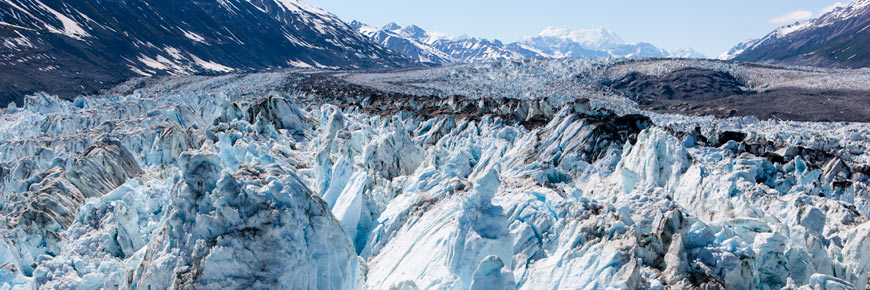
Surging glaciers
Kluane National Park and Reserve
Massive quantities of snow accumulate as moist Pacific air moves over the St. Elias Mountains, feeding the St. Elias Icefields. Valley glaciers radiate out from the icefields, fed by the icefields themselves. Glacial movements are often immense and spectacular and the St. Elias Mountains are home to the greatest concentration of surging glaciers in North America.
Surge Cycle
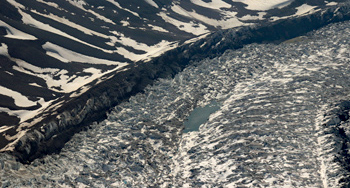
Surge type glaciers alternate between quiescent periods of slow movement and brief periods of fast surging motion when the toe of the glacier rapidly advances. During the quiescent period the glaciers continue to slowly flow, but ice gradually builds up in a "reservoir zone" until a threshold is reached at which point ice is rapidly transferred down-glacier in a surge.
During a surge a glacier can move 100 times faster than usual leaving ice stranded on valley walls and forming jumbled ice cliffs, chaotic crevassing and seracs on its surface. The toe of the glacier advances down valley, often by several kilometres in a matter of months. The advance doesn’t mean there is more glacial ice, but that the ice is moving downhill more quickly. Milder temperatures at the glacier’s terminus cause the ice to melt more quickly and the toe of the glacier recedes. And the cycle begins again. As the climate continues to warm and glaciers continue to lose ice mass, ongoing monitoring is needed to warn area residents of unstable lakes.
Tales of two glaciers
Nàłùdäy (Lowell Glacier)
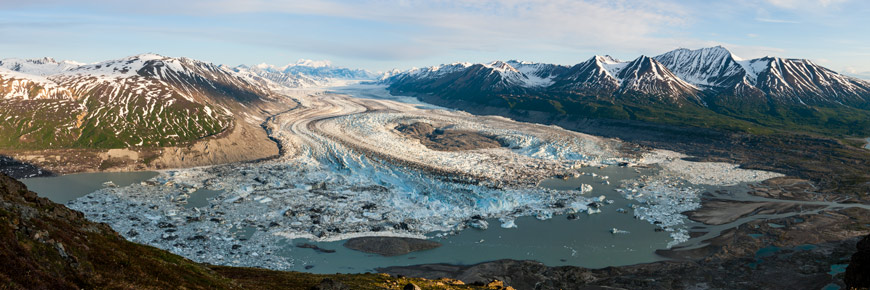
In the past, surges of Nàłùdäy (Lowell Glacier) have dammed the Alsek River at Goatherd Mountain. The resulting lake extended well back to and over the present site of the Village of Haines Junction. The most recent Neoglacial Lake Alsek drained around 1850 in two days after the ice dam broke, with a flow rate comparable to that of the Amazon River. Huge gravel current ripples from this outflow, as well as wave-cut lake benches, are visible in the park along the Alsek Trail. The flooding events associated with Nàłùdäy's surges are the subject of Southern Tutchone First Nation people's legends and stories.
Since 1948 Nàłùdäy has surged five times, once about every fifteen years. Even though the toe has rapidly and dramatically advanced each time, causing consternation, it hasn’t caused a complete blockage of the river. And a pattern is emerging. Each surge is a little less pronounced and doesn’t last quite as long as the previous one.
Wasting away
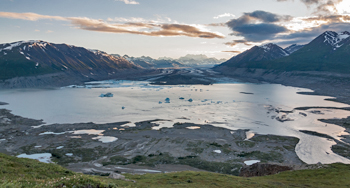
Over the same period Nàłùdäy has undergone significant wasting, which is consistent with other glaciers in the region, and likely underlies the reduction in surge extent and duration. Even if a surge were to completely block the river today, Nàłùdäy's ice has thinned so much that the impounded lake would likely spill over the top of the ice dam before the rising lake waters would reach Haines Junction. That's good news for the Village.
Snow swamp
More recently, during the summer of 2018, record temperatures resulted in a massive “snow swamp”, a slushy mixture of snow and melt water, forming on the upper reaches of Nàłùdäy surface. While the phenomenon itself is not unusual in the warm summer months, its size (45 square kilometres) and the speed with which it formed (a matter of several days) were unprecedented. Over the next several weeks the melt water drained into Lowell Lake at Nàłùdäy's toe increasing the rate of flow in the Alsek River downstream of the lake. A little more ice shed from an already thinning glacier. And a reminder that the warming world we are inhabiting might not be good news for glaciers.
Dän Zhür (Donjek Glacier)

Dän Zhür has a documented history of surging that dates back to the 1930s. Since then it has surged eight times, advancing several hundred meters further into the Dän Zhür Chù (Donjek River) valley. Surges typically last 1 to 3 years, during which time glacier flow speeds can be as high as 1,500 m per year. Like all of Kluane’s glaciers, Dän Zhür is losing ice mass each year due to rising temperatures from the combustion of fossil fuels. This has led to less extensive surge events and overall retreat of the glacier.
The last surge
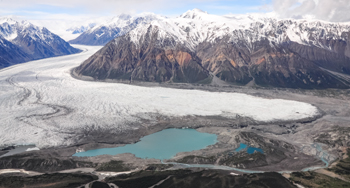
Dän Zhür’s last surge in 2012-2013 caused the glacier to advance and partially dam the Dän Zhür Chù. By the end of the surge a lake had formed at the terminus of the glacier at the intersection of the glacier and river. Since the surge, satellites and time lapse cameras have helped to monitored the growth of the lake.
After the surge
In 2017, on August 15 or 16, the 1.3 km2 lake drained. The following winter, a lake refilled in the same area, growing to 1.86 km2 before it drained again, between August 19 and 21, 2018. The most recent lake formed over the winter of 2018-19 and reached 2.2 km2 at the glacier terminus, the largest lake observed in the last hundred years.
Here today and gone tomorrow
On July 13, 2019 an ice dam holding back the lake broke and the entire lake drained within a period of 36 hours. Fortunately, no one was injured nor was infrastructure damaged during the recent lake drainage event. This event formed an ice canyon at the terminus of Dän Zhür, meaning that lake formation is unlikely to occur again this winter.
07-12-2019
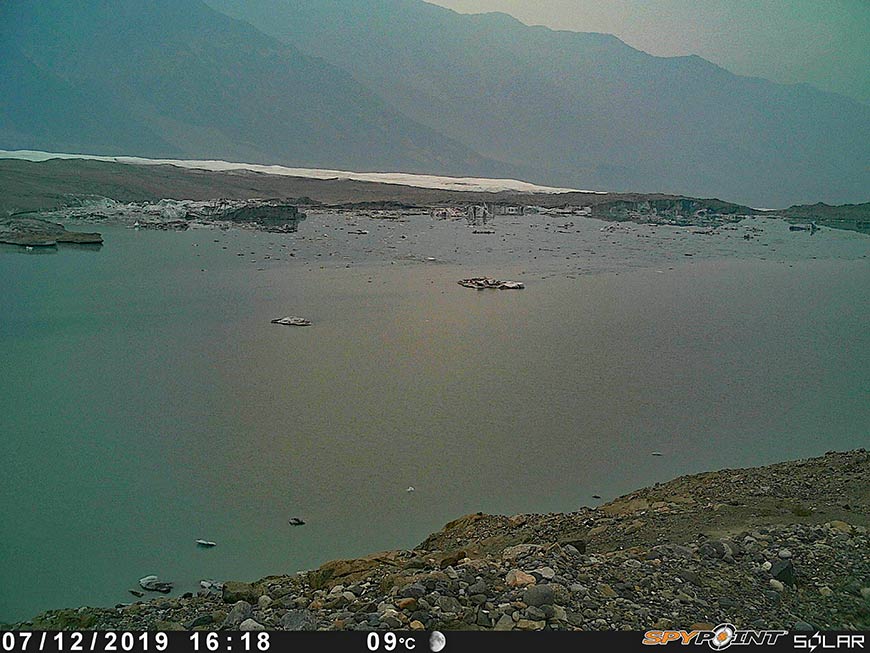
07-13-2019
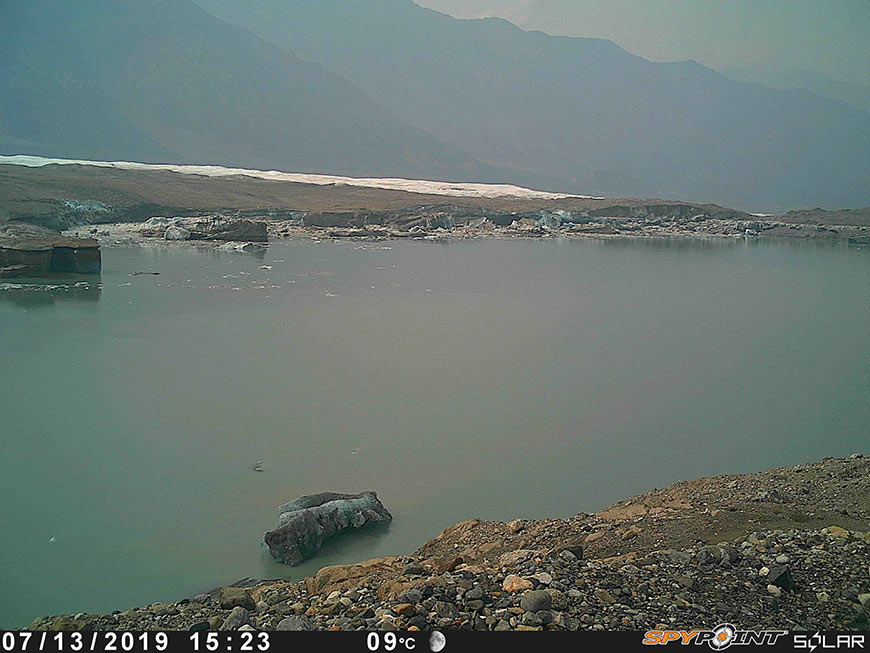
07-14-2019
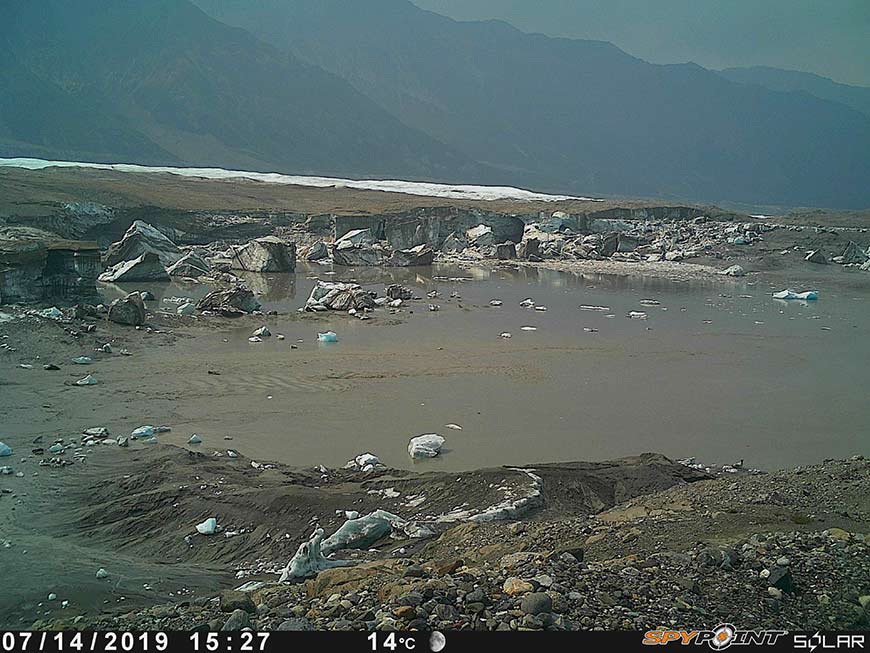
07-15-2019
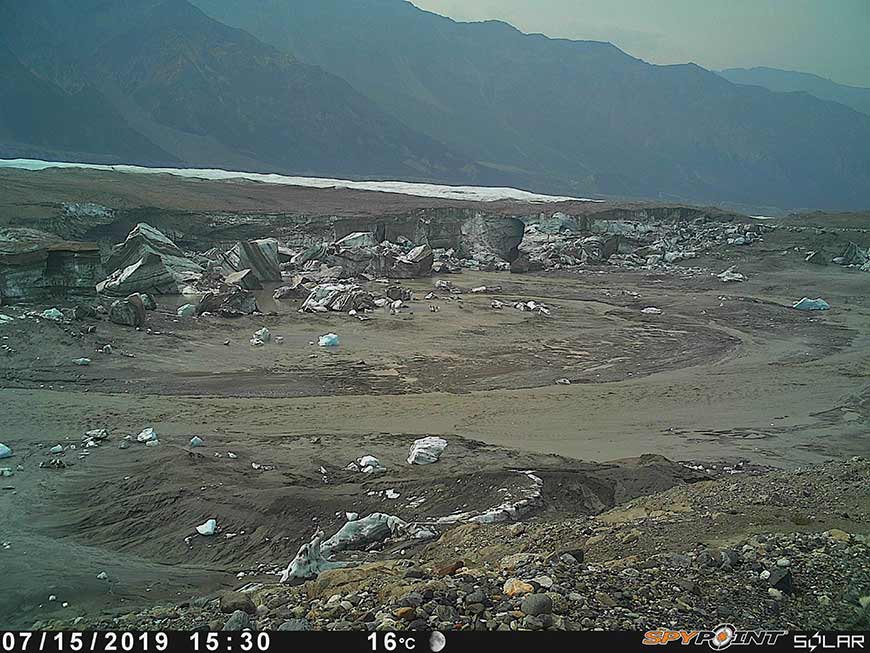
07-16-2019
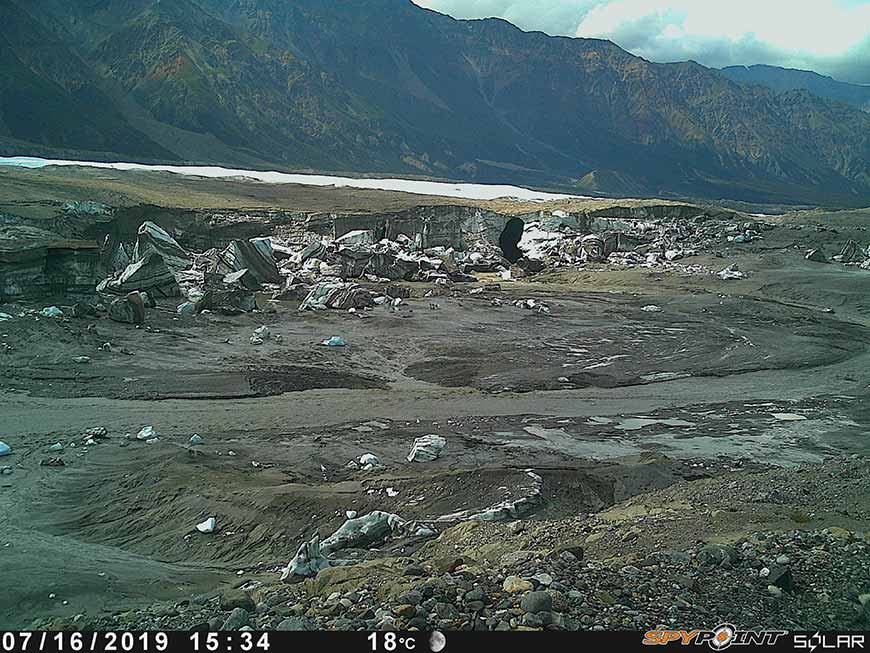
Days of future past
To form another lake at Dän Zhür, a surge is needed to create a new ice dam. A new surge is forecast for the mid-2020s based on the fairly consistent 12-year repeat interval of Dän Zhür’s surges. The big question for Dän Zhür is if and how lakes will continue to form. Will they get bigger, smaller, or cease to form in the future?
More information on surging glaciers
Terminus advance, kinematics and mass redistribution during eight surges of Donjek Glacier
Related links
- Date modified :